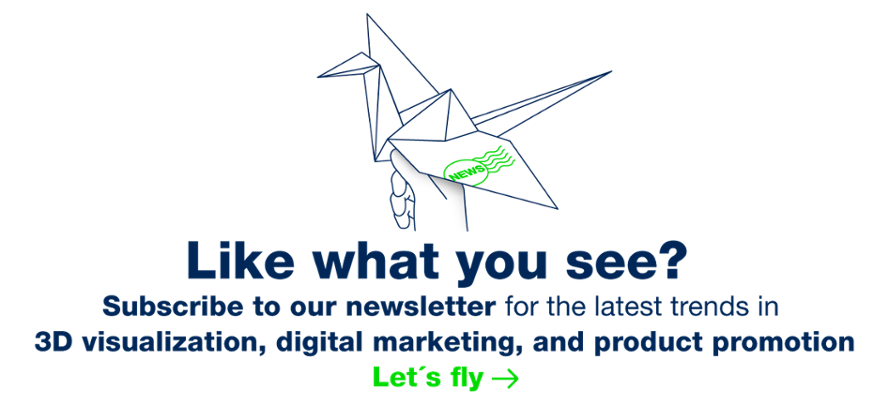Today’s consumers want more than just good products or services at inexpensive prices — they desire an engaging and memorable experience with the brands they choose to do business with. In a highly competitive marketplace, where brands of all sizes, in all industries, are vying for attention, customer experience is everything.
A good or bad interaction with a customer can mean the difference between continued customer loyalty or losing that customer to a competitor. In fact, not only will consumers choose one brand over another based on their customer experience, over 85% will be willing to pay more for a product or service if they receive a better CX from a particular brand.
You might also like: "Why is customer experience (CX) important to a business?"
Knowing this, it seems fairly obvious that providing a favorable customer experience is a critical component to continued success. That’s why it’s vitally important to not only understand what steps must be undertaken to provide a good CX, but also what can be done to always improve upon CX so as to remain competitive and grow your share of the target market.
What is the customer experience?
There are many facets to CX that can ultimately result in your brand gaining or losing a customer. From bad customer services to loyalty programs to engaging consumers on social media to poorly constructed websites — every step of the customer journey is a point that your brand can and will be judged on the experience provided.
If the customer is satisfied with their experience at one point, they will continue on to the next. If not, they will likely begin a new journey with a competitor. So, to put it more simply, the customer experience is the differentiating factor that will make potential customers choose your brand over others.
Everything from the customer service they receive to how easy it is to find information on your website will serve to influence their choice. And that’s why you really need to know your audience…
Knowing your audience
The better you know your audience, the more apt you are to deliver great CX. But there’s a lot to know, especially when many consumer wants and needs seem to be in a constant state of flux. Hopefully, you’ve already been collecting data on your customers and subsequently analyzing that data to determine what problems they face and how they are benefiting from your products or services.
You should also have thorough research on what has worked and what hasn’t worked, how well the customer has interacted with customer support or other members of your organization, and how well your marketing has performed in attracting new customers.
To bolster your efforts at collecting data, you can submit surveys, engage your audience on social media, and read reviews of your brand to see how your brand is perceived.
With all of the above information at your disposal, you should have all you need to develop buyer personas. This will provide you with deeper insight into the wants and needs of your customers, enabling you to fine-tune your marketing efforts.
Understanding the buyer journey
The buyer's journey represents the steps a potential customer will take from first discovering your brand to making a purchase. From start to finish — it’s your chance to impress the customer, make them aware that they have a need, and showcase how your products or services will fulfill that need.
As mentioned earlier, each step along the buyer's journey must also provide the consumer with good CX. That’s why it’s vitally important to know your audience, and their pain points — the problems they are facing that can be solved by your products. Knowing this gives you the power to custom-tailor your marketing to focus on the customer’s pain points and provide a more personalized experience, improving awareness of your brand and providing important information that is valuable to your audience.
Developing the course that a buyer will take requires lots of planning and a good amount of content. Content, in the form of your website, social media posts, whitepapers, videos, high-quality product images, product configurations, and more is what will keep the consumer focused and determined to continue their journey. The more informative, engaging, and interesting your content is, the more you will provide good CX and improve your chances of converting new leads.
Tips for creating a memorable customer experience
When a consumer becomes interested in your brand, they will start to conduct research, typically via a Google search. What appears in the search results can make a big difference in ultimately influencing the consumer’s purchase decision. Research shows that 70% of consumers utilize Google 2-3 times when researching a product or service from a particular brand.
You might also like: "12 customer experience trends for 2020 that you need to consider"
As consumers continue to learn more about your brand, customer experience is key. Depending upon your industry, there will be different points at which you might also interact with the consumer. For example, in the furniture, living, and kitchen/bath industry, it is likely that consumers will at some point seek to engage members of your organization. Building a customer relationship offline is just as important as building one online. But before you get to that point, you need to make sure the consumer is very interested in your brand.
Savvy marketers will capitalize on today’s ever-advancing technology to seize the advantage and present the consumer with engaging content that rivals that of their competitors. Today’s consumers don’t want to be presented with boring text content — they desire something more exciting in the form of high-quality images, professional video, and intuitive sales tools.
Such modern and state-of-the-art efforts on your part can vastly improve the customer experience. And the best part about it is that it isn’t as difficult or expensive to do as you might think. With the aid of a professional visual communication agency, you can develop a marketing campaign composed of cutting-edge visuals, 3D animations, and even VR and augmented reality experiences.
This will deliver a customer experience that surpasses all others and ensures a memorable buyer journey that will likely be shared with others as well. Data shows that a customer who is very happy with their customer experience will share that experience with eight others, and also potentially write a positive review that can be viewed by thousands.
The development of interactive sales tools and a brand story that is consistent throughout all stages of the buyer journey are also important facets to consider. Additionally, increasing brand awareness and delivering a unique customer experience that better reveals how your product or service might solve a consumers problem reinforces their position in the buyer journey and spurs them on to continue along the journey.
In essence, the point of it all isn’t so much to just present good CX — it’s to do a better job than your competitors, who are also focused on delivering a memorable customer experience. And with the new marketing avenues available to you through pioneering technology, it simply makes sense to optimize your marketing mix with sophisticated product configuration tools, 3D visualization, VR and AR, and cutting-edge video techniques.
Evolving your customer experience strategy
While the above options can be used to great effect to enhance the customer experience, you must also seek to evolve your CX strategy in other ways. Just like any marketing strategy, the CX must also be tested, analyzed, and adjusted according to new data and changing consumer behavior.
No matter how effective and great your customer experience may be, it can always be improved — and you must continually strive to improve it, because your competitors are likely focused on doing the same thing. Not to mention, consumers wants and needs may also change at any point in time as a result of a changing economy or other factors, and you must be ready and capable of analyzing user behavior and adapting your strategy to new data.
The best way to stay on top of things and keep your customer experience strategy working at optimal potential is to audit the customer experience from multiple internal perspectives.
What is a customer experience audit?
The customer experience audit is designed to discover any problems or shortcomings in your customer experience strategy. The audit will measure the value and effect of the customer experience at every point along the buyer journey. By establishing a baseline, you can better determine the performance of each point and set a plan for the future.
From the results of your audit, you should be able to better predict changing customer needs and future customer experience trends, enabling you to prioritize elements of your CX strategy and optimize the entire customer journey.
Performing a customer experience audit is an action better left to experienced professionals who have the tools, skills, knowledge, and experience to create a detailed analysis of the buyer journey and map the effectiveness of your CX strategy. You’ll gain valuable insight into the minds of your target audience as well as be equipped with the data you need to further transform your CX and your business.
The benefits of improving the customer experience
While gaining and retaining more customers is the ultimate purpose of delivering CX, it is only one of many benefits gained when you provide a great customer experience. Consider these key benefits of focusing on good CX:
Improved customer engagement
Providing good CX also serves to establish trust. Better trust results in more interaction with your brand and an improved relationship with the customer. By providing something of value to the customer, you can also encourage customer feedback. This mutually beneficial, as you learn firsthand from your customers what they want, what they like or dislike about your brand, and what they value most from your products or services.
At the same time, you create an engaging atmosphere and consumers will appreciate both the interaction and the effort your brand puts forth in communicating with them.
Word of mouth
The best marketing is free marketing, and in today’s digital platforms and social media channels, free marketing opportunities abound. Deliver good CX and word will spread as buyers share their experiences with others, leading to more customer acquisitions that required very little to no effort on your part. According to a Nielsen Study, over 90% of consumers purchase products or services based on recommendations from their family or friends.
Social media platforms now play a vital role in spreading the word about your brand. Cultivating trust and building relationships with your core audience will lead to an ever-expanding share of the target market.
Reduced marketing costs
By focusing your marketing mix on CX, you can effectively reduce your marketing costs. This is because at various points along the buyer journey, you will gain critical data about your buyers, enabling you to continue to fine-tune and improve your marketing without the extra expenditures related to research and data acquisition. A CX approach doesn’t just benefit the consumer — it also helps you understand the buyer better, so you can continue delivering CX that benefits the consumer.
An increase in customer loyalty
As mentioned earlier, consumers today value good CX over virtually all other aspects related to a purchase. Providing an exceptional customer experience also serves to build a loyal customer base that is happy to receive good products and services along with a memorable experience. Through personalized CX customers feel value, and also appreciate the value in the content provided by your brand. This serves to build a long-standing foundation of customer loyalty and retention.
Improved customer feedback
Your engagement with your audience leads to more avenues for improving customer feedback, which can ultimately eliminate the need for customer surveys and other expensive methods for collecting customer data. You can improve your customer feedback collection strategy and further utilize feedback in a cost-effective manner. Customer feedback can also help you understand current consumer behavior as well as predict future trends.
Feedback can be collected at various points along the buyer journey, such as social media platforms, in-store, through email or your website, and intuitive mobile apps. Continued engagement is key. Even a customer who is offering negative feedback will appreciate a brand that takes the time to listen to their concerns and strives to resolve the problem in a satisfactory manner.
Frontline staff will be better equipped to engage customers directly
With all the information collected from data and feedback regarding consumer’s wants and needs, frontline staff will have more valuable insight and information at their disposal to better treat the customer. Staff can be better trained to address buyer’s pain points and motivate the buyer to complete a purchase by showcasing how a product will provide a solution.
You’ll stand out from competitors
The more you focus on developing a CX-centric strategy, the more you’ll differentiate yourself from others in your industry. Even a slight competitive advantage can go a long way towards securing future success. Provide a single customer with a good customer experience now, and they may remain a loyal customer long into the future.
Too many brands still have not grasped the concept of how important the customer experience really is, nor have they realized how advanced they can make the customer experience with the technological tools available. You have the power and the tools at your disposal to march forth into the battleground and decimate the opposing forces.
In conclusion
It is, of course, understandable that you may not have the resources or the knowledge to immediately implement a strong CX strategy. Not many brands do, which is why they turn to professional visual communication agencies that also have their eye on the pulse of the consumer and the knowledge and skills to help you develop amazing, state-of-the-art content to expand and improve the buyer journey.
Embrace a new CX-strategy today, and you’ll stand at the forefront of success tomorrow.















